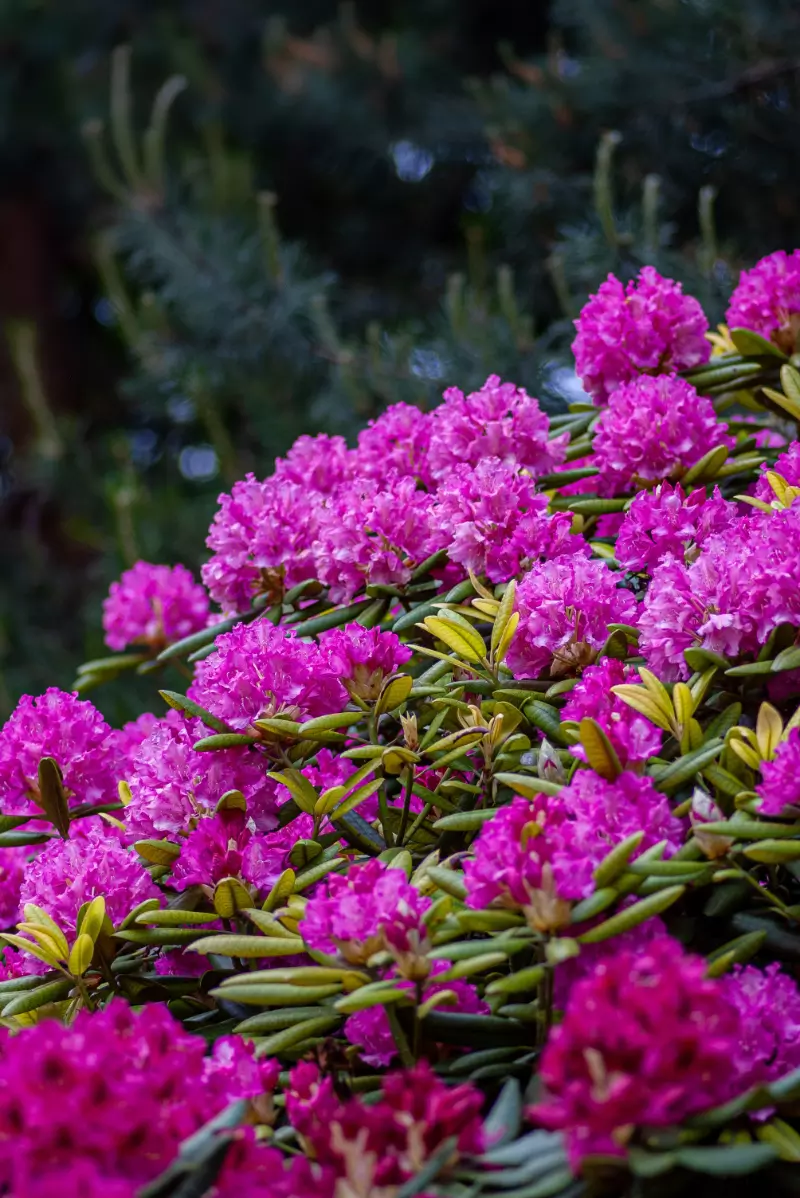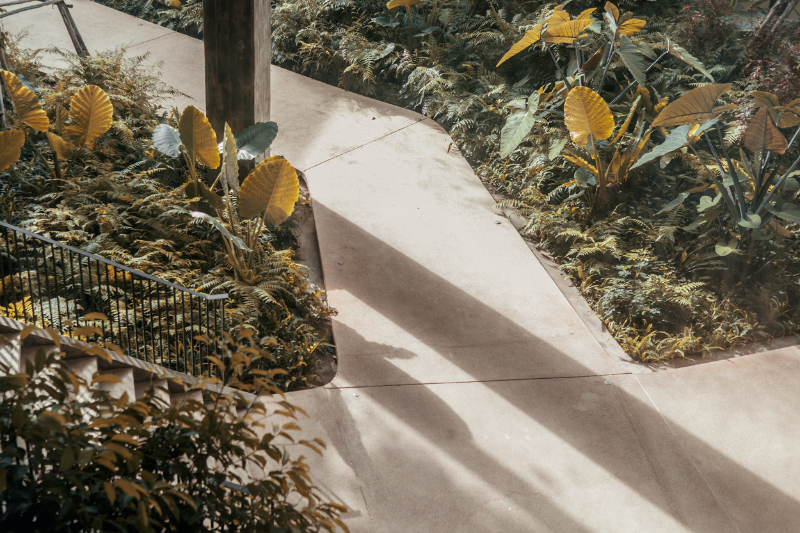Are you asking: should invasive plants be removed? We look at the problem with invasive plants and how to treat invasive non-native plants.
Short answer YES. You should remove invasive plants.
In 2019, a study by the University of College London's (UCL) Center for Biodiversity and Environmental Research discovered that for the last 500 years, the introduction of invasive species has been the main cause of native animal and plant extinction! So keep reading to discover which species present a risk to native garden plants and why removing invasive plants is incredibly important!
How to Treat invasive non-native plants
Firstly, you should never plant non-native species in the wild or enable growth in the wild. A simple mistake like dropping contaminated soil or a piece of plant fragment before proper disposal can lead to a new plant developing and destroying the local biodiversity.
Furthermore, if you find invasive plant species on your land or in your garden, you must prevent spreading and any damage to other properties.
Both enabling growths in the wild and in your garden can be a prosecutable offence, so ensure you read up on local guidelines regarding invasive plant species. There are a few different ways to treat, remove and dispose of invasive plants; these involve chemical, organic and machine methods. Options are listed below:
- Chemical herbicides
- Pulling or digging out live, dead or dying plants
- Cut plants back, preventing seed dispersal
- Burying or smothering
- Burning
Whichever removal method you choose for the invasive plants ensures you're causing minimal damage to human health, animals and ecological biodiversity. Expectantly some methods carry more risks, such as the use of herbicides, especially near waterways, fruit-bearing plants or native plants.
Excessive use of chemicals can damage the regrowth stage of native plants and contaminate the soil with damaging toxins.
Once you have located and removed the invasive plant, you must ensure all plant material is disposed of properly to prevent further spreading and damage to wildlife. After the removal of an invasive plant, the restoration of native plants and localised biodiversity is vital.
The re-establishment of native plant species has various positive effects, from reduced soil erosion to the production of controlled competing plants to support the native environment.
Spray plants with chemicals
An easy and popular way to deal with invasive plants is to spray them with approved chemicals, otherwise known as herbicides. Although these are approved, they can cause irreparable damage when overused or not used correctly.
Furthermore, they can have an effect on fruit-bearing plants and animals, so always read the safety labels and consider organic removal first. Below we briefly break down the necessary certificates, assessments and permissions needed to use approved chemicals.
When using approved chemicals, you must:
Retain a certificate of competence regarding herbicide use; alternatively, a certificate holder can supervise
Natural England must give permission if the area is protected (e.g. special scientific interest)
Complete a Control of Substances Hazardous to Health (COSHH) assessment
The Environment Agency must agree and give you permission to use herbicides in or near water.
Types of invasive non-native plants
Between 2016-2019 there have been 36 recorded invasive plant species non-native to the EU, from well-known invasive weeds like Giant Hogweed to less known species like the Kudzu vine.
The 'EU Regulation on Invasive Alien Species list' is an online collection of the known invasive plant species, with relevant information regarding their appearance, seed production, best disposal methods and more.
The invasive plants most commonly found in the UK are as follows:
- Japanese Knotweed
- Giant Hogweed
- Himalayan Balsam
- Rhododendron Ponticum
- New Zealand Pygmyweed
For more information about each of these invasive plant species, check out Kingsfield Environmental's other report, 'What Is The Best Way To Get Rid Of An Invasive Plant?'.

What is The Problem With Invasive Plants?
Some invasive plants are known to dominate groundcover and have minimal root structure available to bind soils, such as Clematis.
Loose soil over large areas can risk erosion and flooding owed to this. Trees and shrubs prevent flooding from occurring by providing the necessary root structure diversity. Invasive plants provide minimal streamside shade and cover.
In turn, this increases the temperature of the water. Some invasive species like Japanese Knotweed dominate ecosystems, creating a monoculture and preventing the growth of trees.
Whilst native plants extend deeper into the soil whilst offering wider and more dispersed root structures that bind the soil and reduce erosion. Erosion causes sediment to fall into streams which can impair water quality. .
As expected, many invasive plant species are incredibly robust and adaptable to new environments; this is detrimental to localised biodiversity and ecosystems. Native plants can easily become displaced and overpowered by the vigorous development of invasive plants, creating an unhealthy environment.
Plant communities should comprise a variety of trees, shrubs, herbs and native plants to remain healthy, so removal of invasive plants is paramount. The lack of diversity can lead to a bunch of problems, from quick spreading diseases, flooding, fire risks and biological pollution.
Many habitats can be destroyed by invasive plant species, killing not only native plants but the animals that rely on them for nutrients.
The invasive plant species have a direct effect on the 'Endangered Species Act Listings'. An example is a loss of 'Kincaid's lupine', which Fender's blue butterflies rely on as a host plant.
The introduction of non-native invasive plants, Himalayan blackberry and tall oat grass caused habitat changes. Now, under the Endangered Species Act, Fender's Blue Butterflies are endangered, and Kincaid's lupine is listed as threatened. Many non-native species similar to the invasive plant species can be overpowered, as they both demand the same habitat and nutrient needs.
As mentioned, root structure means a lot for the environment, but provided shade is just as important. Invasive plants prevent tree development and growth, and without tree cover, many native plants struggle to survive.
Dense cover from invasive plants prevents sunlight from reaching seedlings and saplings; moreover, climbing plants can weigh trees down and cause more issues.
There are many risks associated with non-native plant monocultures, from diseases to wildfires. Aggressive climbing plants like English Ivy (Hedera helix) can act as a pathway for a fire to reach the tree's canopy; here, it is much more difficult to control the fire and protect nearby structures.
A good example is Cheatgrass; this annual plant grows during early spring and, by summer, is completely dried out. Making it the perfect fuel for a wildfire, especially in monoculture environments.
Currently, Britain spends approximately £1.7 billion each year on the invasive plant problem! Remaining vigilant and maintaining your private land or garden will have a knock-on effect on this, even if you don't realise it.
Garden birds can easily transport an invasive plant species from your garden to the wild, entailing rapid growth and monopolisation of local ecosystems. Additional costs come from a loss of crops and livestock, control efforts, property damage and reduced exports. Increased costs are passed onto the public, with prices rising to balance the costs.
Control of Invasive Plants
I have invasive non-native plants in my garden
You are unlikely to be prosecuted for having an invasive species in your garden; however, you should control them to prevent spreading or remove them if they're listed under the 'EU Regulation on Invasive Alien Species list'.
You can use a variety of methods to remove the plants, just ensure that all plant material is disposed of correctly to prevent re-seeding. Remember to not use toxic chemicals near waterbeds. If you own a large area or garden, you could contact a certified contractor specialising in invasive weed control.
How should I dispose of these invasive weeds?
- Aquatic weeds: Can be put in garden compost, buried in trenches or dried out and burnt.
- Himalayan balsam, Giant hogweed, and Japanese knotweed: This waste is considered 'controlled waste' under the Environmental Protection Act (Duty of Care) Regulations. DO NOT put it in the green garden bin or general waste bin. It should be taken off-site to be disposed of in a registered landfill. Local councils will have information on this.
- Other invasive plants on the EU list: Can be burnt, or the DEFRA advise using the normal green waste bin, as long as no fragments are left over.
What if I don't control an invasive species on my land?
To control the increase in invasive non-native species, the UK Government introduced new provisions in the Infrastructure Act (2015). There are two categories under this Act; a species control agreement and a species control order.
The first comprises land owners who are aware of invasive plant species on their land and have been approached by an environmental authority to reach an agreement for dealing with the non-native plants. If the landowner fails to meet requirements, the environmental authority can take control of the situation, and in some cases, it can lead to prosecution of the landowner.
In the case where landowners don't respond correctly, or in the case of an emergency, a 'species control order' can then be issued. This can only be enforced if the invasive species is listed on Schedule 9 of the Wildlife & Countryside Act.
If the landowner is incredibly difficult and the problem goes further local authorities and police can become involved under the Anti-Social Behaviour, Crime and Policing Act (2014), as any negative effect on other locals' quality of life can lead to a community protection notice.
Do you have a Japanese Knotweed problem? If you require Japanese Knotweed Removal in Essex or throughout the UK, contact our expert today.


